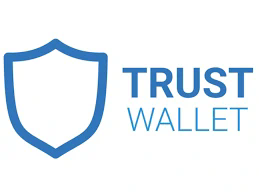A Comprehensive Guide on How to Transfer from Trust Wallet to Coinbase
## Introduction
In the rapidly evolving landscape of cryptocurrencies, managing your digital assets has become a pivotal task for investors, traders, and crypto enthusiasts. Two popular platforms for handling cryptocurrencies are Trust Wallet and Coinbase. Trust Wallet serves as a decentralized mobile wallet where users have complete control over their private keys, while Coinbase acts as a centralized exchange that facilitates the buying, selling, and trading of various cryptocurrencies.
Transferring crypto assets from Trust Wallet to Coinbase is a common process for users who want to take advantage of Coinbase’s trading features or convert their cryptocurrencies into fiat. This article will delve deep into the process of transferring funds from Trust Wallet to Coinbase, highlighting necessary precautions, technical details, and frequently asked questions to provide a comprehensive understanding of the entire operation.
## Understanding Trust Wallet and Coinbase
### What Is Trust Wallet?
Trust Wallet is a decentralized, open-source wallet designed for various cryptocurrencies. It provides a user-friendly interface and allows users to store, send, and receive a wide range of digital assets directly from their mobile devices. Some key features of Trust Wallet include:
1. **Decentralization**: Users have full control over their private keys, which enhances security and privacy.
2. **Multi-Currency Support**: Trust Wallet supports thousands of ERC20, BEP2, and BEP20 tokens, making it versatile for many users.
3. **Integration**: It allows integration with decentralized exchanges (DEXs) and other crypto services, providing a vast ecosystem for crypto transactions.
### What Is Coinbase?
Coinbase is one of the largest and most user-friendly centralized exchanges in the cryptocurrency market. It allows users to buy, sell, and trade a wide array of cryptocurrencies. Some distinguishing characteristics of Coinbase include:
1. **User-Friendly Interface**: Designed for beginners, the platform provides an intuitive design that makes navigating the crypto space much easier.
2. **Regulatory Compliance**: As a regulated exchange, Coinbase ensures that users comply with applicable laws, which offers a degree of security and reliability.
3. **Fiat Integration**: Users can easily convert cryptocurrencies to fiat (like USD or EUR), making it a preferred choice for many investors.
## Step-by-Step Guide to Transfer from Trust Wallet to Coinbase
### Step 1: Set Up Your Coinbase Account
Before initiating a transfer, ensure that you have a fully functional Coinbase account. Follow these steps to set up your account:
1. **Download the Coinbase App**: Available on both iOS and Android.
2. **Create a New Account**: Enter your email address and create a strong password.
3. **Verify Your Email**: Check your inbox for a verification link from Coinbase.
4. **Complete KYC**: Confirm your identity by providing required documentation, such as government-issued ID.
### Step 2: Obtain Your Coinbase Deposit Address
To transfer cryptocurrency from Trust Wallet to Coinbase, you must first obtain the deposit address for the specific cryptocurrency you wish to send.
1. **Log into Coinbase**.
2. **Go to the ‘Assets’ Tab**: Here, you will see a list of supported cryptocurrencies.
3. **Select the Cryptocurrency**: Click on the asset you plan to deposit (e.g., Bitcoin, Ethereum).
4. **Click ‘Receive’**: You will see your unique deposit address; you can copy this address or scan the QR code.
### Step 3: Initiate the Transfer from Trust Wallet
Follow these steps to send cryptocurrency from your Trust Wallet to Coinbase:
1. **Open Trust Wallet**.
2. **Select the Cryptocurrency**: Tap on the crypto asset you wish to send.
3. **Click ‘Send’**: This will direct you to the sending interface.
4. **Paste the Coinbase Deposit Address**: In the recipient’s address field, paste the Coinbase address you copied earlier.
5. **Enter the Amount**: Specify the amount you wish to transfer.
6. **Review the Transaction**: Make sure all details are correct, including the address and amount.
7. **Confirm the Transaction**: Tap on ‘Next’ and then confirm the transaction. Trust Wallet may prompt you to approve the transaction using your wallet security features (e.g., biometric authentication).
### Step 4: Wait for Confirmation

After initiating the transfer, it may take some time for the transaction to be confirmed on the blockchain. The time varies based on network congestion and the asset being sent. You can observe the transaction status in Trust Wallet.
### Step 5: Verify the Deposit in Coinbase
Once the transaction is confirmed on the blockchain, the funds should appear in your Coinbase account.
1. **Go to your Coinbase Wallet**.
2. **Check the ‘Assets’ Tab**: Your cryptocurrency balance should reflect the amount you transferred.
3. **Transaction History**: You can also review your transaction history to verify the deposit.
## Knowledge Points: Best Practices and Precautions
### Verify Addresses
Always double-check the cryptocurrency address you are sending to. A single mistake in the address can result in irreversible loss of funds. Utilize features like QR codes to minimize errors.
### Transaction Fees
Understand that transferring cryptocurrencies incurs transaction fees, which varies by the network and the currency being sent. Always review and confirm these fees before proceeding with the transaction.
### Choosing the Right Cryptocurrency
Ensure you are transferring the correct cryptocurrency to Coinbase. For instance, do not send Bitcoin to an Ethereum address. Use the right blockchain network to avoid funds being lost.
### Security Measures
1. **Enable Two-Factor Authentication (2FA)**: Protect your Coinbase account by setting up 2FA.
2. **Use Strong Passwords**: Create complex passwords for your accounts.
3. **Beware of Phishing Scams**: Always access Coinbase via the official website or app to prevent phishing attempts.
## Technical Insight: How Transactions Work
When you initiate a crypto transfer, a transaction is created on the blockchain network corresponding to the asset being sent. The process involves several key components:
1. **Transaction Creation**: The wallet generates a transaction where the sender’s address, recipient’s address, and the amount being sent are specified.
2. **Digital Signing**: The transaction is signed with the sender’s private key, ensuring authenticity.
3. **Broadcasting**: The signed transaction is broadcasted to the network for validation.
4. **Mining and Confirmation**: Miners (or validators), depending on the blockchain, validate and confirm the transaction. This process ensures that the transaction is legitimate and prevents double-spending.
5. **Completion**: Once confirmed, the transaction is recorded on the blockchain, and the funds are accessible to the recipient.
## Frequently Asked Questions (FAQs)
### Can I Transfer Any Cryptocurrency from Trust Wallet to Coinbase?
You can transfer most cryptocurrencies supported by both Trust Wallet and Coinbase. It’s crucial to ensure the asset you want to transfer is supported by Coinbase.
### How Long Does It Take for the Transfer to Complete?
Transfer times depend on network congestion and the specific cryptocurrency. On average, it may take a few minutes to a couple of hours for the transaction to be confirmed.
### What Happens If I Send to the Wrong Address?
If funds are sent to an incorrect address, recovery is often impossible. Always verify the recipient’s address before sending.
### Are There Limits on Transfers?
Both Trust Wallet and Coinbase may impose limits based on various factors such as regional regulations, your account verification level, and the asset being transferred. Review these limits on both platforms.
### How Do I Track My Transaction?
You can track your transaction via a blockchain explorer by entering your transaction ID, which is usually available in Trust Wallet post-transaction.
## Conclusion

Transferring cryptocurrency from Trust Wallet to Coinbase is a relatively straightforward process, provided users take the necessary precautions. By understanding both platforms and following meticulous steps, you can ensure that your assets are transferred securely and efficiently. With the growing adoption of cryptocurrencies, mastery of asset management will only become more critical for investors in this field.
By adhering to best practices and continually educating yourself about the crypto landscape, you can navigate this complex world with greater confidence. Whether you are holding long-term or actively trading, understanding the mechanisms and operations behind crypto transfers will elevate your overall experience in the cryptocurrency space.


